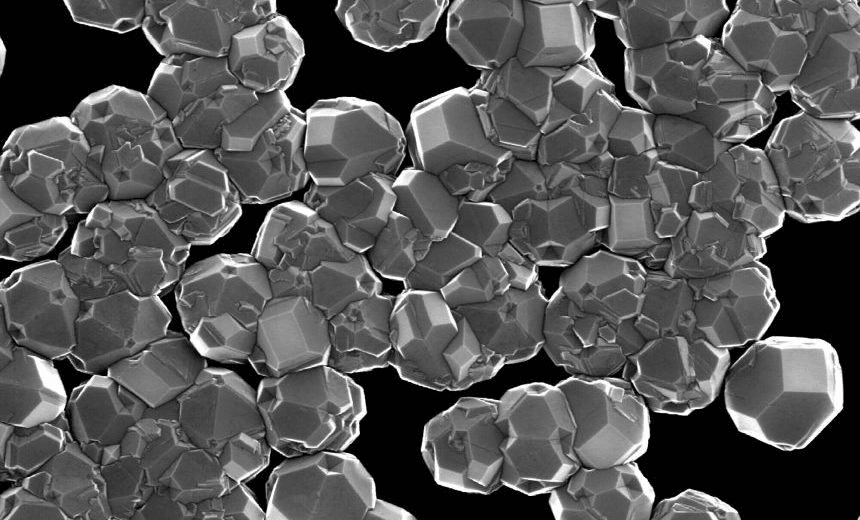First discovered in atomic bomb testing, nanodiamonds could prove crucial to a range of technologies that change, if not save, lives. Charles Anderson talks to nanoscientist Amanda Barnard, a guest at the AMN8 conference in Queenstown
The Soviet scientists were blowing things up.
It was 1963, at the height of the Cold War, and nuclear conflict was a distinct possibility.
For a nuclear bomb to explode it requires a quick, strong squeeze of its core. And the best way these scientists had to do that was by using other explosives. So they detonated using carbon-based creations. But when they went off something unexpected happened. What usually takes natural diamonds immense pressure, a billion years and 1,000 degrees celsius to form from carbon took only an instant. But the residue from these explosives could not be seen with the naked eye. These were only about four nanometres wide.
“A nanometre is a millionth of a millimetre,” says nanoscientist Amanda Barnard. “To give us an idea, the head of a dressmaking pin is about a millimetre across.”
So a million nanometers will fit across the head a pin. DNA is about two to 12 nanometers in diameter – 3000 times smaller than a red blood cell and 10,000 times smaller than a strand of human hair.
What the Soviet scientists had discovered were nanodiamonds.
But it would be another 40 years before that researchers would realise that they had some practical application.
They were nontoxic and so had started to be used in medicine as they were small enough to enter cells. They started to be tested as a way to deliver drugs but researchers kept finding that the aggregate of nanodiamonds, once administered, would not break up and allow the release the drug.
Then in 2014, Barnard, an Australian theoretical physicist, won one of the world’s top science prizes for her decade-long work on nanodiamonds.
“Using entirely theoretical and computational methods, Dr Barnard has spearheaded understanding of the structure and stability of carbon nanostructures,” announced the Foresight Institute, which established the Feynman Prize in 1993. It is described as a Nobel Prize for the nanoscience world.
Barnard’s work required the use of powerful supercomputers to rapidly generate decades’ worth of data on these tiny particles. The hope was that they might one day lead to extraordinary, life-changing products.
She had discovered by using computer simulation how these nanodiamonds operated and why they would not break up.
In effect, she says, they had a curious electrostatic charge which made them strongly attracted to each other but could also be easily disrupted. This opened up opportunities to use finally use them effectively, by using electrostatic triggers.
“Most drugs work are injected which is very inefficient,” says Barnard. “Injectable drugs are indiscriminate.”
For example in chemotherapy the drug is administered in a burst where healthy cells are attacked along with cancerous ones.
However, Barnard also developed a new technique for investigating the shape of nanomaterials including their size, temperature or potential uses in chemistry. This means she can tailor them to make bespoke nanoparticles targeted to specific application areas.
So if you combined nanodiamonds to form an electrostatic “sponge” that breaks down in a controlled way, you can work out how much drugs to administer. Then if you use a prosthetic or a targeting mechanism you can control when and where it happens.
“By using strategic nanodiamond delivery you can control the delivery over time without the burst,” Barnard says.
However, the diamonds also have other potential applications. It has been suggested that because of their hardness they could be used as a micro abrasive that could be added to engine oil to help vehicles run more efficiently.
They also might change the way surgery is done as they have been found to bind rapidly with a protein found in our bodies which encourages bone and cartilage growth.
There are myriad more ways they could be used – from skincare and blood testing to bio sensors and quantum computing.
But when Barnard started in nanotechnology 20 years ago she was in uncharted territory. She had read about it and was excited that it was something that you could could study at university.
“I found the lack of detailed information intriguing,” she says.
During her PhD she used supercomputers to understand how nanoparticles operated.
“We are good in science at predicting exact structures but in reality there are no perfect structures,” she says.
Now using big data she is able to input “some imperfection” into the modelling to find out how real nanomaterials might perform under specific conditions.
“By predicting how imperfections at a molecular level impact on performance, we can design products with less susceptibility to faults from the outset.”
She describes going into big data sets to identify these sorts of trends as “finding buried treasure”.
“It’s exciting when you can see the forest for the trees and get a moment of clarity, when all the data coalesces. Those moments are really interesting and I look forward to having more of them.”
This is part of a series of articles for the Spinoff about and from AMN8, The Eighth International Conference on Advanced Materials and Nanotechnology, in Queenstown from February 12-16 2017. For details on public events in Christchurch, Wanaka, Queenstown and Nelson, click here. This content series is sponsored by the conference’s hosts, The MacDiarmid Institute for Advanced Materials and Nanotechnology, a national institute devoted to scientific research.

